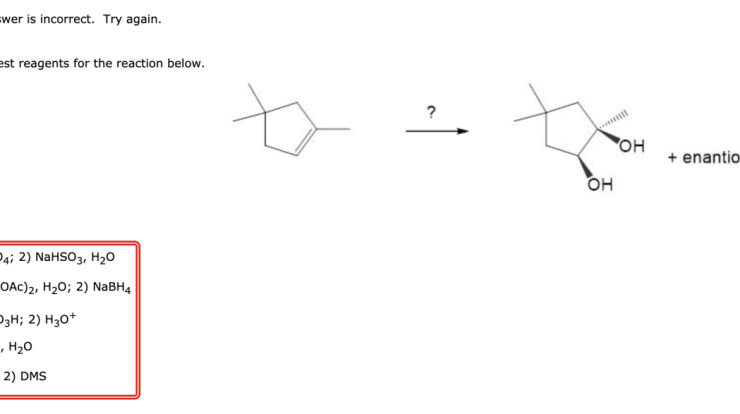What is the mass of 5 moles of fe2o3 – Embarking on a scientific expedition, we delve into the enigmatic realm of iron oxide, specifically exploring the mass of 5 moles of Fe2O3. This intriguing inquiry unveils the intricate relationship between molar mass and the weight of substances, unraveling the secrets of this essential compound.
Fe2O3, commonly known as hematite, is a ubiquitous mineral with a rich history and diverse applications. Its significance extends from pigments in prehistoric cave paintings to rust prevention in modern-day industries. Understanding its mass is crucial for comprehending its behavior and harnessing its potential.
Mass of Fe2O3: What Is The Mass Of 5 Moles Of Fe2o3

The mass of a given number of moles of a substance can be calculated using its molar mass. Molar mass is the mass of one mole of a substance, expressed in grams per mole (g/mol). To determine the mass of 5 moles of Fe2O3, we need to first find its molar mass.
Molar Mass of Fe2O3
The molar mass of Fe2O3 is the sum of the atomic masses of the constituent elements, multiplied by their respective number of atoms in the compound. Iron (Fe) has an atomic mass of 55.845 g/mol, and oxygen (O) has an atomic mass of 15.999 g/mol.
Fe2O3 contains two iron atoms and three oxygen atoms, so its molar mass is:
Molar mass of Fe2O3 = (2 × 55.845 g/mol) + (3 × 15.999 g/mol) = 159.69 g/mol
Mass of 5 Moles of Fe2O3
Now that we have the molar mass of Fe2O3, we can calculate the mass of 5 moles using the formula:
Mass = Number of moles × Molar mass
Plugging in the values, we get:
Mass of 5 moles of Fe2O3 = 5 moles × 159.69 g/mol = 798.45 g
Therefore, the mass of 5 moles of Fe2O3 is 798.45 grams.
Properties of Fe2O3
Fe2O3, also known as hematite, is a naturally occurring iron oxide mineral. It is characterized by its reddish-brown color and is widely used as a pigment in various industries.
Physical Properties
- Color: Reddish-brown
- Density: 5.24 g/cm³
- Solubility: Insoluble in water
- Melting point: 1565 °C
- Boiling point: 2980 °C
Chemical Properties
- Formula: Fe2O3
- Oxidation state: Fe³⁺
- Magnetic properties: Antiferromagnetic
- Chemical stability: Stable under normal conditions
Applications
- Pigments: Used in paints, cosmetics, and ceramics due to its reddish-brown color.
- Rust prevention: Applied as a protective coating on iron and steel surfaces to prevent corrosion.
- Electronics: Used in magnetic recording media and as a catalyst in chemical reactions.
Comparison with Other Iron Oxides
Fe2O3 differs from other iron oxides in several aspects:
- FeO (Wüstite): Black in color, has a lower oxidation state of Fe²⁺, and is more reactive than Fe2O3.
- Fe3O4 (Magnetite): Black in color, has a mixed oxidation state of Fe²⁺ and Fe³⁺, and is magnetic, unlike Fe2O3.
Production of Fe2O3

Iron(III) oxide (Fe2O3), commonly known as rust, is a versatile material with applications in various industries. Its production methods include thermal decomposition, oxidation, and precipitation, each with unique advantages and disadvantages.
Thermal Decomposition, What is the mass of 5 moles of fe2o3
Thermal decomposition involves heating iron compounds, such as Fe(OH)3 or FeCO3, to high temperatures in the absence of oxygen. This process drives off volatile components, leaving behind Fe2O3.
Reaction:2Fe(OH)3 → Fe2O3 + 3H2O
Equipment:Furnace or kiln
Advantages:
- High purity Fe2O3
- Controllable particle size
Disadvantages:
- Energy-intensive
- Can produce undesirable byproducts
Oxidation
Oxidation involves reacting iron or iron compounds with oxygen at elevated temperatures. This process converts Fe2+ to Fe3+ and forms Fe2O3.
Reaction:4Fe + 3O2 → 2Fe2O3
Equipment:Rotary kiln or fluidized bed reactor
Advantages:
- Simple and cost-effective
- Produces high-quality Fe2O3
Disadvantages:
- Can be slow
- Requires careful control of temperature and oxygen levels
Precipitation
Precipitation involves reacting soluble iron salts with a base, such as NaOH or NH4OH, to form insoluble Fe2O3.
Reaction:FeCl3 + 3NaOH → Fe(OH)3 + 3NaCl
Equipment:Precipitation tank or reactor
Advantages:
- Versatile and adaptable
- Can produce various grades of Fe2O3
Disadvantages:
- Can be time-consuming
- Produces large amounts of wastewater
Chemical Reactions of Fe2O3

Iron(III) oxide (Fe2O3) undergoes various chemical reactions, including reduction, oxidation, and hydrolysis. These reactions have significant applications in chemical processes and industrial settings.
Reduction
Fe2O3 can be reduced to produce elemental iron. This reaction is commonly used in the iron and steel industry:
- Fe2O3 + 3CO → 2Fe + 3CO2
In this reaction, carbon monoxide (CO) acts as a reducing agent, removing oxygen from Fe2O3 to form elemental iron.
Oxidation
Fe2O3 can undergo oxidation to form higher oxidation states of iron, such as Fe(IV) or Fe(VI):
- Fe2O3 + 3O2 → 2Fe2O5
This reaction is typically carried out at high temperatures and is used in the production of certain types of ceramics and pigments.
Hydrolysis
Fe2O3 reacts with water to form iron(III) hydroxide (Fe(OH)3):
- Fe2O3 + 3H2O → 2Fe(OH)3
This reaction is important in the formation of iron oxide minerals in nature and is also used in wastewater treatment to remove iron impurities.
Environmental Impact of Fe2O3
Iron(III) oxide (Fe2O3), commonly known as rust, is a ubiquitous compound with various industrial and natural applications. However, its environmental impact requires careful consideration.Fe2O3 can have detrimental effects on soil quality. Its accumulation in soil can lead to reduced nutrient availability, impaired root development, and decreased water retention capacity.
This can result in stunted plant growth and reduced crop yields.Fe2O3 can also contaminate water sources. When it enters water bodies, it can increase turbidity, affecting aquatic life and reducing water quality for human use. Additionally, Fe2O3 can bind to heavy metals and other contaminants, potentially exacerbating their environmental impact.In
the atmosphere, Fe2O3 particles can contribute to air pollution. They can act as condensation nuclei for water vapor, leading to increased cloud formation and precipitation. Fe2O3 particles can also scatter and absorb sunlight, affecting the Earth’s radiative balance.
Regulations and Best Practices
To mitigate the environmental impact of Fe2O3, various regulations and best practices have been established. These include:
- Regulations on the disposal of Fe2O3 waste to prevent its release into the environment.
- Proper storage and handling of Fe2O3 to minimize accidental spills or leaks.
- Use of alternative materials or processes that reduce the generation of Fe2O3 waste.
- Implementation of water treatment technologies to remove Fe2O3 from wastewater.
Mitigation Methods
Additional methods for mitigating the environmental impact of Fe2O3 include:
- Soil remediation techniques, such as chelation or bioremediation, to reduce Fe2O3 accumulation in soil.
- Development of Fe2O3-based materials with reduced environmental impact, such as nanomaterials or composites.
- Research on the potential use of Fe2O3 as a catalyst or adsorbent for environmental remediation purposes.
By understanding the environmental impact of Fe2O3 and implementing appropriate regulations and mitigation measures, we can minimize its negative effects and promote a sustainable environment.
FAQ Guide
What is the chemical formula of Fe2O3?
Fe2O3 represents the chemical formula for iron(III) oxide, also known as hematite.
What is the molar mass of Fe2O3?
The molar mass of Fe2O3 is approximately 159.69 g/mol, indicating the mass of one mole of the compound.
How do you calculate the mass of 5 moles of Fe2O3?
To calculate the mass, multiply the molar mass (159.69 g/mol) by the number of moles (5 moles), resulting in a mass of approximately 399.9 grams.
